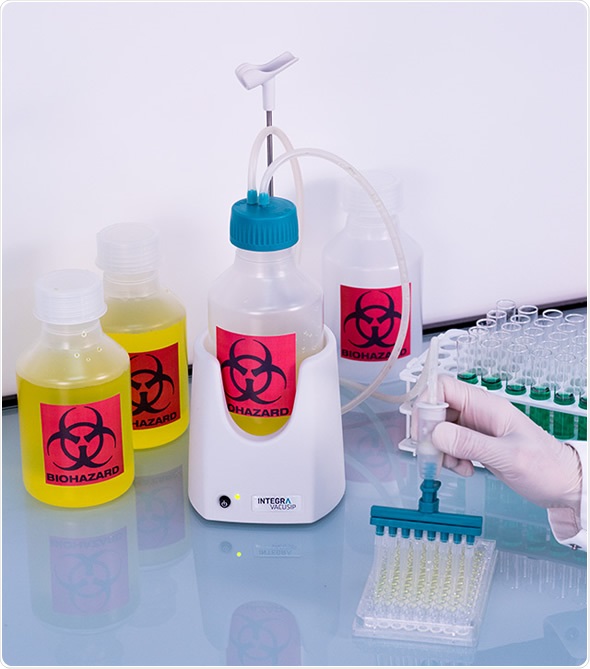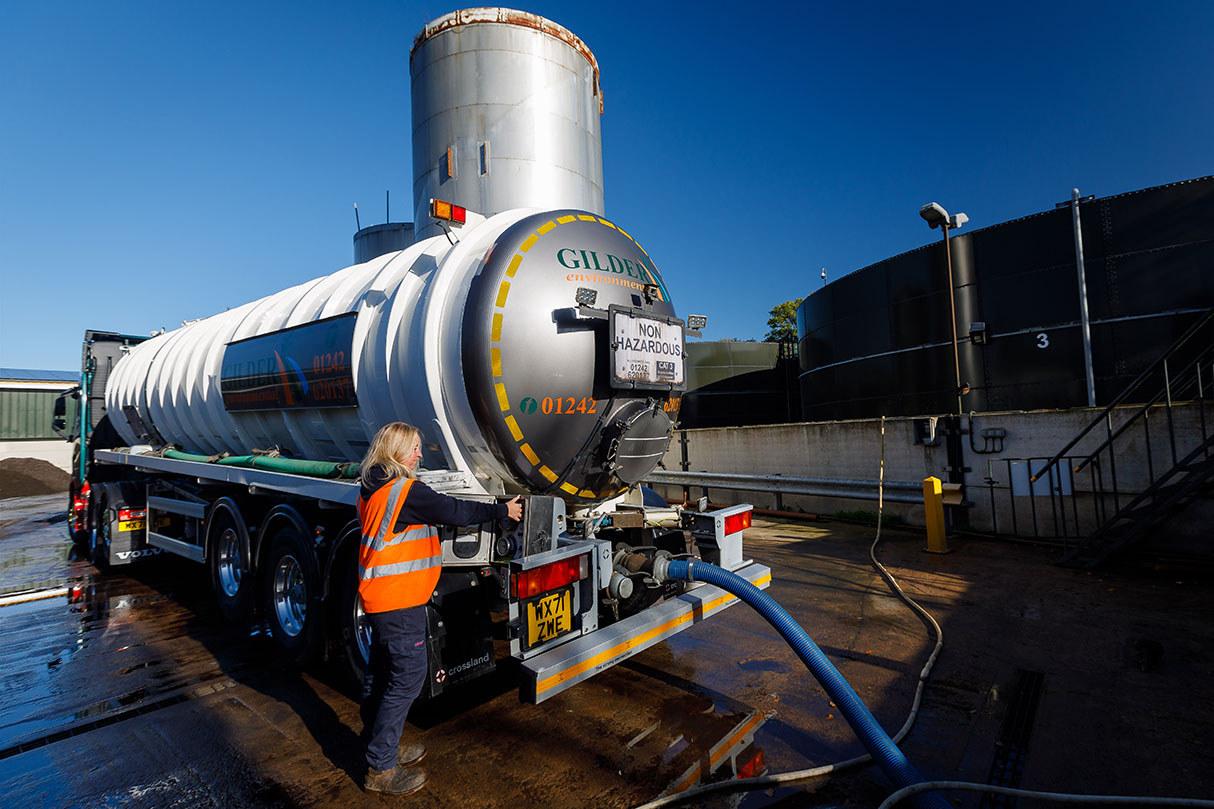Exactly How Fluid Garbage Disposal Works: A Detailed Review of Techniques and Technologies Utilized

Overview of Liquid Waste Kind
The intricacy of fluid waste kinds necessitates a thorough understanding of their qualities and effects for disposal. Liquid waste can generally be categorized into numerous kinds, consisting of industrial, municipal, agricultural, and contaminated materials. Each category shows distinct residential properties, needing details monitoring methods to mitigate environmental and health threats.
Industrial fluid waste originates from producing procedures and commonly has a series of contaminants, such as heavy metals, solvents, and organic substances. Community fluid waste, primarily making up wastewater from houses and commercial establishments, includes natural issue, nutrients, and microorganisms (industrial wastewater treatment). Agricultural fluid waste, including drainage from ranches, might contain fertilizers, chemicals, and pet waste, posing threats to water top quality and environments
Dangerous fluid waste is defined by its toxicity, sensitivity, or possible to trigger injury. Recognizing these diverse liquid waste types is vital for creating reliable disposal approaches and making certain compliance with environmental guidelines.
Physical Therapy Methods

Screening is the initial action, where larger particles and debris are gotten rid of from the fluid waste making use of displays or grates. This procedure safeguards downstream devices from damage and guarantees smoother operation. Complying with screening, sedimentation makes use of gravitational pressure to different solids from fluids. In sedimentation storage tanks, larger bits resolve at the base, developing a sludge layer, while the cleared up fluid can be further dealt with.
Filtering is an additional crucial method that includes passing the liquid with porous products, such as sand or membrane layers, to record smaller bits. This step enhances the quality of the liquid, making it suitable for subsequent treatment procedures.

Chemical Treatment Strategies
Chemical treatment strategies are crucial for successfully handling fluid waste, especially in resolving liquified and colloidal pollutants that physical techniques might not sufficiently get rid of. These methods utilize different chemical representatives to reduce the effects of, speed up, or change hazardous compounds into much less dangerous kinds.
One common approach is coagulation and flocculation, where chemicals such as alum or ferric chloride are included to promote the gathering of put on hold fragments. This procedure enhances sedimentation, permitting for less complicated removal of the resulting sludge. In addition, oxidation processes, using agents like chlorine or ozone, are utilized to damage down complex organic substances and virus, providing the waste safer for discharge or more treatment.
Neutralization is an additional crucial strategy, which readjusts the pH of acidic or alkaline navigate to this site waste streams to neutral degrees, stopping possible damage to downstream systems and the atmosphere. Additionally, progressed oxidation processes (AOPs) utilize combinations of oxidants and ultraviolet light to weaken consistent toxins, achieving a greater level of therapy efficiency.
Biological Treatment Procedures
Organic treatment procedures play a crucial duty in the monitoring of fluid waste by making use of microorganisms to disintegrate natural matter and lower impurity levels. These procedures can be generally categorized right into aerobic and anaerobic treatments, each using particular microbial areas to attain efficient waste destruction.
Cardio therapy includes using oxygen to assist in the malfunction of natural materials by germs. This process is frequently implemented in turned on sludge systems, where aeration storage tanks supply a conducive setting for microbial development, causing the oxidation of natural contaminants. The resultant biomass can be divided from treated effluent with sedimentation.
In contrast, anaerobic treatment happens in the absence of oxygen, counting on different microorganisms to damage down raw material. This method is specifically useful for high-strength waste, as it produces biogas, a renewable resource resource, while reducing sludge production. Technologies such as anaerobic digesters are frequently used in community and commercial applications.
Both cardiovascular and anaerobic organic treatments not just lessen the ecological influence of liquid waste but also help with resource healing, making them necessary elements of lasting waste management techniques. Their effectiveness, efficiency, and flexibility support their click this link extensive execution throughout different sectors.
Emerging Technologies in Disposal
Ingenious methods to fluid waste disposal are swiftly progressing, driven by improvements in innovation and a raising focus on sustainability. Amongst these emerging technologies, membrane bioreactors (MBRs) have actually gained grip for their ability to incorporate biological therapy with membrane filtration, leading to premium effluent that can be recycled in different applications. MBRs make it possible for smaller footprints and more efficient operations contrasted to conventional systems.
An additional appealing advancement is the usage of anaerobic food digestion integrated with nutrient recuperation innovations, which not just treats fluid waste but also creates biogas and recuperates useful nutrients like nitrogen and phosphorus. This dual advantage improves source effectiveness and reduces environmental impact.
In addition, advanced oxidation procedures (AOPs) are being taken on for the degradation of complex organic pollutants. These techniques make use of powerful oxidants and catalysts to break down impurities at the molecular degree, supplying a very reliable service for difficult waste streams.
Additionally, the combination of expert system and device discovering in waste monitoring systems is optimizing operational performance and predictive maintenance, causing lowered prices and enhanced environmental compliance. These technologies show a considerable shift in the direction of even more lasting and reliable liquid garbage disposal methods.
Conclusion
Finally, efficient liquid garbage disposal requires an extensive understanding of various techniques and innovations. The assimilation of use this link physical, chemical, and organic treatment approaches makes certain the effective monitoring of varied waste types. In addition, the emergence of ingenious technologies enhances treatment efficiency and advertises sustainability in waste monitoring methods. By constantly advancing these methods, it ends up being possible to resolve the expanding obstacles linked with fluid waste, ultimately adding to ecological security and source recovery.
Fluid waste disposal is an important element of ecological administration, requiring a detailed understanding of numerous strategies and innovations tailored to different waste types. Fluid waste can broadly be categorized into a number of kinds, consisting of industrial, municipal, farming, and hazardous waste. Agricultural fluid waste, including drainage from farms, may include fertilizers, pesticides, and animal waste, presenting risks to water top quality and ecological communities.
Different physical treatment techniques play an important role in handling liquid waste successfully - industrial wastewater treatment.In conclusion, reliable fluid waste disposal necessitates a comprehensive understanding of different strategies and modern technologies